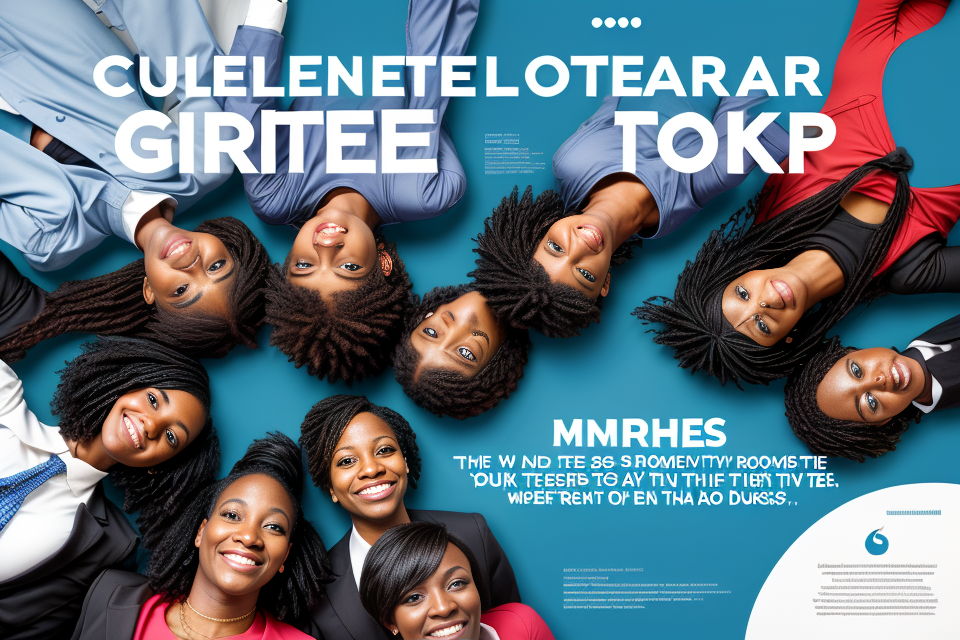Leadership is a widely discussed and debated topic in today’s world. With various definitions and theories floating around, it can be quite challenging to identify the best definition of leadership. In this comprehensive guide, we will delve into the various aspects of leadership and explore the best definition of leadership. We will discuss the traits and qualities of an effective leader, the different leadership styles, and the role of leadership in organizational success. By the end of this guide, you will have a clear understanding of what makes a great leader and how to apply it in your personal and professional life. So, let’s dive in and unpack the best definition of leadership!
Defining Leadership: Theories and Models
Trait Theories
Characteristics of a Leader
Trait theories of leadership focus on the innate characteristics and qualities of an individual that make them a good leader. These characteristics can include things like intelligence, charisma, integrity, and emotional intelligence. According to this perspective, leaders are born with certain traits that make them naturally suited to leadership roles.
Great Man Theory
The Great Man theory is a specific type of trait theory that suggests that great leaders are born with certain innate qualities that set them apart from others. This theory emphasizes the importance of individual personality traits, such as intelligence, courage, and determination, in making a great leader.
Characteristics of a Leader
The Great Man theory suggests that there are certain innate characteristics that all great leaders possess. These characteristics include:
- Intelligence: The ability to think critically and make sound decisions.
- Courage: The willingness to take risks and stand up for what is right.
- Determination: The ability to persevere in the face of adversity.
- Integrity: The ability to be honest and ethical in all situations.
- Charisma: The ability to inspire and motivate others.
Criticisms and Limitations
One of the main criticisms of the Great Man theory is that it assumes that leadership is an innate quality that cannot be learned or developed. This can lead to the exclusion of potential leaders who do not possess these innate qualities. Additionally, the theory does not take into account the social and environmental factors that can influence the development of leadership skills.
Modern Interpretations
While the Great Man theory has been criticized for its narrow focus on individual characteristics, it has also been adapted and refined over time. Modern interpretations of the theory suggest that while certain innate qualities may be necessary for leadership, they are not sufficient. Instead, leaders must also develop certain skills and abilities through experience and training.
Transformational Leadership Theory
Transformational leadership theory is a popular framework that focuses on the leader’s ability to inspire, motivate, and influence their followers to achieve a shared vision. This theory was first introduced by James McGregor Burns in 1978 and has since become one of the most widely studied leadership theories.
The Four Pillars of Transformational Leadership
Transformational leadership theory is built on four key pillars:
- Idealized Influence: This refers to the leader’s ability to inspire trust and respect from their followers through their personal characteristics and behaviors. This includes being honest, ethical, and acting with integrity.
- Inspirational Motivation: This refers to the leader’s ability to inspire and motivate their followers by setting a positive example, communicating a compelling vision, and providing meaningful work.
- Intellectual Stimulation: This refers to the leader’s ability to challenge their followers to think critically and creatively, encourage them to question assumptions, and support their intellectual growth.
- Individualized Consideration: This refers to the leader’s ability to provide individualized support and attention to each follower, taking into account their unique needs, strengths, and weaknesses.
Transformational Leadership in Practice
Transformational leadership theory can be applied in various settings, including business, politics, and social organizations. Some examples of transformational leaders include:
- Martin Luther King Jr.: As a civil rights leader, Martin Luther King Jr. inspired and motivated his followers to fight for racial equality and justice. He was known for his charismatic speeches, non-violent protests, and ability to connect with people on a personal level.
- Steve Jobs: As the co-founder and CEO of Apple, Steve Jobs was known for his innovative ideas, visionary leadership, and ability to inspire and motivate his employees. He challenged them to think creatively and provided individualized support and attention to each team member.
- Nelson Mandela: As the first black president of South Africa, Nelson Mandela led his country through a period of political transition and reconciliation. He was known for his courage, integrity, and ability to inspire and motivate his followers to work towards a common goal.
Benefits and Criticisms of Transformational Leadership
Transformational leadership has been shown to have several benefits, including increased employee engagement, improved job satisfaction, and higher levels of productivity. However, it has also been criticized for being too idealistic and difficult to implement in practice. Some critics argue that transformational leaders may be more focused on their own vision and goals rather than the needs and concerns of their followers.
The Best Definition of Leadership: Authentic Leadership Theory
What is Authentic Leadership?
Authentic leadership is a leadership approach that emphasizes the importance of being genuine, transparent, and ethical in one’s leadership style. It focuses on developing and maintaining relationships built on trust, respect, and mutual understanding.
Three Pillars of Authentic Leadership
Authentic leadership is based on three key pillars:
Self-Awareness
Self-awareness is the first pillar of authentic leadership. It involves understanding one’s own strengths, weaknesses, values, and beliefs. A self-aware leader is able to recognize their emotions and how they affect their behavior, which helps them to make better decisions and communicate more effectively.
Relational Transparency
Relational transparency is the second pillar of authentic leadership. It involves being open and honest with others, sharing information and feedback, and building trust through mutual respect and understanding. A transparent leader creates an environment where people feel comfortable sharing their thoughts and ideas, which leads to better collaboration and decision-making.
Internalized Moral Perspective
Internalized moral perspective is the third pillar of authentic leadership. It involves having a strong sense of ethics and morality, and making decisions based on what is right rather than what is convenient or profitable. An authentic leader is guided by a set of values and principles that they believe in and that influence their behavior and decision-making.
Authentic Leadership in Practice
Authentic leadership can be applied in many different contexts, from business and politics to education and healthcare. Here are some examples of how authentic leadership can be put into practice:
- A CEO who leads with authenticity might be open and transparent about the company’s financial performance, share information and feedback with employees, and make decisions based on what is best for the company and its stakeholders.
- A political leader who leads with authenticity might be honest and transparent about their policies and actions, listen to the concerns of their constituents, and make decisions based on what is best for the community.
- A teacher who leads with authenticity might create a classroom environment that is safe and supportive, build relationships with students based on trust and respect, and encourage students to be themselves and express their ideas.
Examples of Authentic Leaders
There are many examples of authentic leaders in history and in contemporary society. Here are a few:
- Nelson Mandela, who led South Africa through a period of political transition and reconciliation with grace and humility.
- Oprah Winfrey, who has built a media empire based on her authenticity and her ability to connect with people on a deep level.
- Martin Luther King Jr., who led the civil rights movement with courage and conviction, and inspired millions of people to stand up for what they believed in.
Benefits and Criticisms of Authentic Leadership
Authentic leadership has many benefits, including increased trust and respect, better decision-making, and more engaged and committed employees. However, there are also criticisms of authentic leadership, including the idea that it can be too soft or indecisive, and that it may not be effective in all contexts.
Authentic Leadership vs. Transformational Leadership: A Comparison
Similarities and Differences
Shared Characteristics
- Both authentic and transformational leadership emphasize the importance of ethics and morality in leadership practices.
- Both approaches prioritize the development of the leader’s self-awareness and emotional intelligence to foster effective leadership.
- Both require leaders to establish a strong sense of trust and credibility with their followers.
Distinguishing Features
- Authentic leadership focuses on leading with honesty, integrity, and transparency, while transformational leadership emphasizes inspiring and empowering followers to achieve their full potential.
- Authentic leaders are more concerned with aligning their actions with their values, while transformational leaders focus on inspiring and motivating their followers to achieve a shared vision.
- Authentic leadership tends to be more reactive, while transformational leadership is more proactive and future-oriented.
Decision-Making
- Authentic leaders prioritize making decisions that align with their values and beliefs, while transformational leaders make decisions that benefit the greater good and advance the shared vision.
- Authentic leaders involve their followers in decision-making processes, while transformational leaders use their charisma and vision to inspire and motivate followers to support their decisions.
Motivation Techniques
- Authentic leaders use intrinsic motivation techniques, such as providing autonomy and fostering a sense of purpose, while transformational leaders use both intrinsic and extrinsic motivation techniques, such as offering rewards and recognition.
- Authentic leaders focus on building relationships based on trust and respect, while transformational leaders focus on inspiring and motivating followers to achieve a shared vision.
Leader-Follower Relationships
- Authentic leaders prioritize building strong relationships based on trust and mutual respect, while transformational leaders focus on inspiring and motivating followers to achieve a shared vision.
- Authentic leaders value individual differences and seek to understand their followers’ perspectives, while transformational leaders focus on aligning followers’ values and beliefs with the shared vision.
The Importance of Leadership Style in Organizational Success
Factors Influencing Leadership Style
Individual Differences
Leadership style is shaped by individual differences such as personality traits, values, beliefs, and life experiences. For example, a leader who is extroverted and enjoys socializing may have a different leadership style than an introverted leader who prefers to work independently. Understanding individual differences can help leaders adapt their leadership style to suit their team members’ needs and preferences.
Organizational Culture
Organizational culture refers to the shared values, beliefs, and practices that shape the behavior of individuals within an organization. A leader’s leadership style can significantly influence the organizational culture. For instance, a leader who values innovation and risk-taking may encourage a culture of creativity and experimentation, while a leader who prioritizes stability and predictability may foster a culture of conformity and caution.
Industry and Market Conditions
Industry and market conditions can also influence a leader’s leadership style. In fast-paced and highly competitive industries, leaders may need to adopt a more directive and authoritative leadership style to drive results and meet deadlines. In contrast, in slow-paced and less competitive industries, leaders may adopt a more participative and collaborative leadership style to foster creativity and innovation.
The Leader’s Role in Shaping Organizational Culture
Leaders play a critical role in shaping an organization’s culture. By modeling the behaviors and values they want to see in their team members, leaders can create a culture that aligns with their vision and goals. Additionally, leaders can use their leadership style to reinforce the desired culture by rewarding behaviors that align with the culture and addressing those that do not. By intentionally shaping the culture, leaders can create a work environment that supports their team members’ growth and development, ultimately leading to organizational success.
FAQs
1. What is leadership?
Leadership is the process of influencing and guiding individuals or groups towards achieving a common goal. It involves setting direction, inspiring and motivating others, and managing resources to achieve desired outcomes.
2. What are the key traits of a good leader?
A good leader should possess qualities such as vision, integrity, communication skills, empathy, resilience, and the ability to inspire and motivate others.
3. What is the difference between a manager and a leader?
A manager focuses on managing resources and overseeing processes, while a leader focuses on inspiring and guiding individuals towards achieving a common goal. A leader has a vision and can motivate and influence others to work towards that vision, while a manager primarily focuses on maintaining control and order.
4. What are the different leadership styles?
There are several leadership styles, including autocratic, democratic, and laissez-faire. Autocratic leaders make decisions without input from others, while democratic leaders involve others in decision-making. Laissez-faire leaders allow others to make decisions and only intervene when necessary.
5. How can I develop my leadership skills?
To develop your leadership skills, you can seek out opportunities to lead, such as volunteering for leadership roles in organizations or taking on leadership positions in group projects. You can also seek out mentorship from experienced leaders, attend leadership training programs, and read books and articles on leadership.
6. What are some common challenges in leadership?
Common challenges in leadership include managing conflict, making difficult decisions, balancing competing priorities, and inspiring and motivating others. Effective leaders are able to navigate these challenges through effective communication, active listening, and strong problem-solving skills.
7. How can I improve my communication skills as a leader?
To improve your communication skills as a leader, you can practice active listening, speak clearly and concisely, and tailor your message to your audience. You can also seek feedback from others on your communication style and work to improve your nonverbal communication, such as body language and tone of voice.


